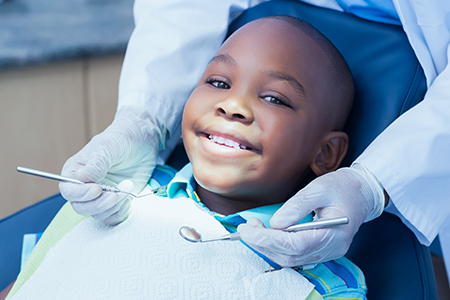
At Saugeen Shores Family Dentistry, we focus on helping children develop healthy, confident smiles that last a lifetime. Our team combines pediatric-focused training, modern technology, and a calm, child-friendly approach to make each visit productive and reassuring for both kids and parents.

The foundation of strong oral health begins with early, consistent care. We encourage families to introduce dental hygiene activities from the first tooth, establishing routines that become second nature. Simple, age-appropriate practices—regular brushing with a soft-bristle brush, careful flossing as teeth touch, and limiting sugary drinks—make a measurable difference over time.
Pediatric visits aren’t just about treating problems; they’re opportunities to monitor growth, teach skills, and reduce anxiety around dental care. During early checkups we focus on gentle exam techniques, short and clear explanations, and positive reinforcement so children associate the dental office with safety and kindness rather than fear.
Prevention is a team effort. Our clinicians partner with families to design realistic daily routines and practical strategies for busy households. From demonstrations that show proper brushing technique to guidance on when to transition from parental brushing to independent brushing, our goal is to empower caregivers with tools that support lasting oral health.

Regular dental exams let us catch small issues before they become complex. At each visit, we review medical history, examine the teeth and gums, and evaluate jaw development and bite. For growing children, these routine assessments help identify any emerging concerns—such as early decay, alignment changes, or habits that could affect long-term development—so we can recommend timely interventions.
Screening may include targeted digital radiographs when necessary; these images reveal the status of unerupted teeth, the health of the jawbone, and areas between teeth that are hard to see. Radiographs are used judiciously and only when they add clear value to diagnosis and treatment planning.
Professional cleanings performed by our hygienists remove plaque and tartar that daily brushing can miss, reducing inflammation and minimizing the risk of cavities. Each visit also includes practical coaching for home care—short, actionable tips parents and children can use right away.
Tooth decay remains one of the most common childhood health issues, but it is largely preventable. Decay develops when bacteria in plaque feed on sugars and create acids that weaken tooth enamel. Frequent exposure to sugary snacks or drinks, inconsistent brushing, and prolonged bottle or sippy-cup use can increase risk.
We emphasize targeted prevention: strategic use of fluoride treatments, timely placement of dental sealants on permanent molars, and clear guidance about daily habits. These measures, combined with routine exams and cleanings, greatly lower the likelihood of cavities and the need for more invasive care later on.
Start dental care early and schedule the first dental visit by the time your child’s first tooth appears or by their first birthday.
Clean baby and toddler teeth with a soft cloth or infant brush, and introduce a pea-sized amount of fluoride toothpaste as soon as appropriate.
Avoid letting infants sleep with bottles containing milk, formula, or juice; offer water instead when appropriate.
Maintain regular checkups and professional cleanings to catch changes early and keep plaque under control.
Model good oral hygiene—children learn habits from caregivers, so brushing together can reinforce consistent practice.
Choose tooth-friendly snacks, reduce sugary beverages, and encourage water throughout the day.
Support children in weaning from pacifiers and discouraging thumb-sucking at the appropriate developmental stage.
Protect active smiles with a properly fitted mouthguard for sports and high-impact activities.

Tooth development begins well before birth, and early milestones are important signposts for healthy growth. Many infants begin to show front teeth between 6 and 12 months, and by about age three most children have a full set of primary teeth. Early dental visits help ensure those milestones are progressing as expected.
During baby checkups we address common concerns such as teething discomfort and demonstrate safe soothing techniques. We also discuss appropriate oral hygiene for infants—how to clean gums and emerging teeth, when to introduce a toothbrush, and how to supervise brushing effectively.
Because primary teeth serve as placeholders for permanent teeth, preserving their health is vital. Even though baby teeth will eventually be replaced, untreated decay can lead to pain, infection, and problems with spacing that affect the adult dentition.
School years bring rapid changes in the mouth—permanent teeth erupt, bite relationships evolve, and new behaviors influence oral health. As children begin sports, orthodontic considerations and consistent oral hygiene become increasingly important. We monitor developing smiles with a focus on prevention and timely referral when specialty care is indicated.
Nutrition and lifestyle choices take on greater weight during these years. Sticky snacks and frequent sugary beverages can accelerate decay, while a balanced diet provides the vitamins and minerals that support strong enamel and healthy gums. We provide practical recommendations that fit into busy school and family schedules.
For adolescents, we pay special attention to habits that affect long-term outcomes—tobacco avoidance, managing dry mouth when taking medications, and wearing mouth protection during athletics. If orthodontic treatment becomes appropriate, early detection allows for more predictable, less invasive planning.
When injuries occur—sports impacts, falls, or other accidents—quick assessment is essential. Our team provides prompt, evidence-based care for dental trauma to protect long-term function and appearance, minimizing complications and preserving developing teeth whenever possible.
Evaluating jaw growth and tooth alignment is a routine part of pediatric dental exams. Many bite problems are detectable by early elementary school, and identifying them early gives families more options. We watch for crowding, asymmetry, and habits that might influence how the jaws develop, and we advise parents about the appropriate timing for orthodontic evaluation.
A balanced diet supports oral tissues and systemic growth. Calcium, vitamin D, and protein help develop strong teeth and bone, while limiting sugary and acidic foods reduces decay risk. We help families make practical choices—swap sugary drinks for water, choose whole fruits over sticky candies, and plan meals that support oral health without adding complexity to daily life.
In summary: caring for a child’s smile is a combination of prevention, education, and timely clinical care. Our office is dedicated to providing clear guidance, conservative treatment, and a welcoming environment so that children learn to value their oral health. If you have questions about pediatric dental care or would like to learn more about services for infants, children, or teens, please contact us for more information.
A pedodontist is a dentist who has received advanced specialty training in meeting the dental needs of children from infancy to adolescence. Pedodontists, also referred to as "pediatric dentists," study child psychology, behavior management, caring for children with special needs, methods of handling oral/facial trauma, and various techniques for providing anesthesia and sedation. Pedodontists also understand the complexities of facial growth and development and have the clinical skills required to meet the dental needs of all children at every stage of development. Most of all, pedodontists are passionate about what they do and enjoy working with children. They strive to make every dental experience a positive one as they help children establish a strong foundation for good oral health.
Even before your child is born, their first set of teeth is already forming. In fact, by one year of age, some of your baby's front teeth will have already come into place. While the arrival of your baby's first teeth is only one of many developmental milestones, it represents an excellent time to begin a program of oral care. According to recommendations from the American Dental Association, babies should see the dentist around the time of their first birthdays.
Your baby's first teeth typically begin to appear in the 6 to 12-month range. While this is an extraordinary milestone, you need to be aware that your baby may find the experience a little bit uncomfortable. Teething can make babies feel irritable. They may be fussy, have trouble sleeping, not want to eat, and drool quite a bit.
Although you are powerless to speed up the process of teething, there are a few things that you can do to soothe your baby as the new teeth are erupting into place. Common approaches to helping your baby feel more comfortable while getting new teeth, include teething rings or a cold spoon or moist gauze rubbed over their gums.
Even for these few new teeth, it's absolutely essential to establish an effective regimen of oral care. For information on when your baby's first set of teeth will erupt into place, consult this timeline from the American Dental Association: Eruption Charts
Some children persist in sucking their thumbs or fingers beyond their preschool years. For these children, the activity continues to be a source of comfort, relaxation, and security. It may even help them fall asleep at night. However, it's essential to be aware that in the long-term, a finger sucking habit is not healthy.
If your child's thumb or finger sucking habit is still present when the permanent teeth begin to come in, your child is at a higher risk of developing a bad bite. By the age of five or six years, you need to constructively and gently help your child stop the habit.
It's also a good idea to have a comprehensive evaluation at this time. Your pedodontist can assess if there are any habit related alterations to the alignment of your child's teeth or jaws, or if it is affecting their speech or swallowing patterns. They can also discuss habit control strategies with you, as well as follow your child's bite and facial development as they grow. If interceptive appliances or corrective orthodontic care are recommended, the timetable and best options in care will be explained in complete detail.
Dental organizations recommend a child's first dental visit by their first birthday or within six months after the first tooth erupts. An early exam allows the dentist to evaluate oral development, identify potential concerns, and offer guidance on feeding, pacifier use and home care. This first visit also helps children become familiar with the dental office in a low-stress way. Caregivers should bring questions about teething, fluoride and dietary habits so the team can provide practical advice.
At Saugeen Shores Family Dentistry we focus on gentle, age-appropriate exams and caregiver education to build a strong preventive foundation. During the visit our team will review developmental milestones, demonstrate brushing techniques and discuss fluoride use. We tailor recommendations to each child so families leave with clear, actionable next steps.
Most children benefit from dental checkups and professional cleanings every six months, which allows your dental team to monitor growth and catch issues early. Some children with a history of cavities, medical conditions or special needs may require more frequent visits based on individual risk. Your dentist will recommend an appropriate recall interval after assessing oral health and daily habits.
Each routine visit typically includes a clinical exam of the teeth, gums and bite, along with age-appropriate digital radiographs when needed to evaluate developing teeth. A professional cleaning removes plaque and tartar from hard-to-reach areas and reinforces effective brushing and flossing techniques. Preventive measures such as fluoride varnish and dental sealants may be discussed to reduce the risk of decay.
Good early habits prevent most tooth decay in babies and toddlers, starting with cleaning gums after feedings and wiping teeth gently once they appear. Avoid putting a baby to sleep with a bottle containing milk or juice and limit sugary snacks and drinks between meals. Begin brushing as soon as the first tooth erupts using an age-appropriate soft brush and a smear of fluoride toothpaste.
Caregivers should supervise brushing until the child can reliably clean all tooth surfaces, usually around age 7 or 8, and avoid sharing utensils to reduce transmission of cavity-causing bacteria. Regular dental visits allow for early application of fluoride varnish and assessment for sealants when permanent molars erupt. Nutrition, daily hygiene and professional prevention together form the most effective strategy to protect young smiles.
Teething can cause drooling, irritability, sleep disruption and mild gum soreness as teeth push through the gums. Safe comfort measures include chilled (not frozen) teething rings, gentle gum massage with a clean finger and offering cool foods if age-appropriate. Avoid topical benzocaine products for infants and consult your dentist or pediatrician if symptoms are severe or accompanied by fever.
If a tooth appears delayed, if swelling or redness persists, or if your child has difficulty breathing or feeding, seek professional advice promptly to rule out infection or other issues. Your dental team can offer tailored recommendations and reassurance about expected timelines for eruption. Keeping a record of eruption patterns and concerns helps the dentist track development over time.
Thumb sucking and pacifier use are common self-soothing behaviors in infants and young children and typically do not require intervention in early years. If the habit continues beyond age 4 or 5, it can begin to influence tooth position and jaw growth, which may affect how the permanent teeth emerge. Timing matters, so parents should watch for signs that the habit is changing the bite or speech.
Dentists can suggest gentle, age‑appropriate strategies to discourage the habit, such as positive reinforcement, gradual limits and replacement techniques. When dental changes are detected, early evaluation helps determine whether orthodontic monitoring or treatment is needed. A consistent, supportive approach between caregivers and the dental team gives the best chance of a successful transition away from the habit.
A properly fitted mouthguard is the most effective way to protect a child's teeth, lips and jaw during sports and physical activities. Custom-made mouthguards provided by a dental office offer the best fit, comfort and protection compared with store-bought options. Wearing a mouthguard has been shown to reduce the risk of dental trauma during contact and collision sports.
Dentists will recommend the appropriate type of mouthguard based on the sport, level of play and the child's dental development. Along with a mouthguard, proper helmets and face protection should be used when indicated by the sport's safety standards. If an injury occurs, seek dental care promptly so damage can be assessed and treated to preserve oral health.
Dental sealants are thin, protective coatings applied to the chewing surfaces of molars and premolars to block grooves where bacteria collect. Sealants are typically painless to apply and can provide an additional barrier against decay for children at risk. They are most often recommended soon after permanent molars and premolars erupt.
Your dental provider will evaluate each child's individual risk for cavities and recommend sealants when appropriate as part of a comprehensive prevention plan. Sealants are checked at routine visits and can be reapplied or repaired if they become worn. Combined with good home care and fluoride, sealants are an effective tool to protect back teeth.
Assessing dental development includes evaluating tooth eruption, spacing, bite alignment and facial growth during routine exams. Digital x-rays and clinical measurements help the dentist identify early signs of crowding, misalignment or jaw discrepancies. Monitoring over time allows for timely decisions about interception or referral.
Professional guidelines suggest an orthodontic check by age 7 when developmental problems are easier to identify and early treatment may simplify later care. If intervention is advisable, the dental team will explain options, timing and the goals of treatment in terms of function and growth guidance. Coordination between general dentists and orthodontic specialists ensures care plans are tailored to each child's needs.
Dental emergencies in children can include a knocked-out tooth, fractured tooth, severe toothache or swelling from infection. For a completely displaced permanent tooth, find the tooth, handle it by the crown, rinse gently if dirty and, if possible, reinsert it or store it in milk or a tooth preservation solution en route to urgent care. Primary (baby) teeth are more delicate; contact your dentist quickly rather than attempting to force a tooth back into place.
For pain or swelling, apply a cold compress and contact the dental office for prompt assessment to reduce the risk of infection or further damage. Avoid placing aspirin on a child's gums and follow the dentist's instructions about appropriate over-the-counter pain relief for the child's age. Timely professional care is essential to preserve oral structures and restore comfort after an injury or infection.
Saugeen Shores Family Dentistry provides pediatric care in a child-friendly environment with an emphasis on prevention, education and safe, modern techniques. The clinical team focuses on gentle behavior guidance, age-appropriate cleaning and preventive services such as fluoride varnish and sealants. When needed, the practice offers options to help manage anxiety and coordinates with specialists for comprehensive care.
Caregivers are encouraged to partner with the dental team to establish routines, address feeding and habit concerns, and plan timely checkups and interventions. Families in Port Elgin and the surrounding region can contact the office to schedule a pediatric consultation or to learn what to expect at a child's first visit. Open communication between parents and the dental team helps ensure each child receives care tailored to their growth and health needs.
Quick Links